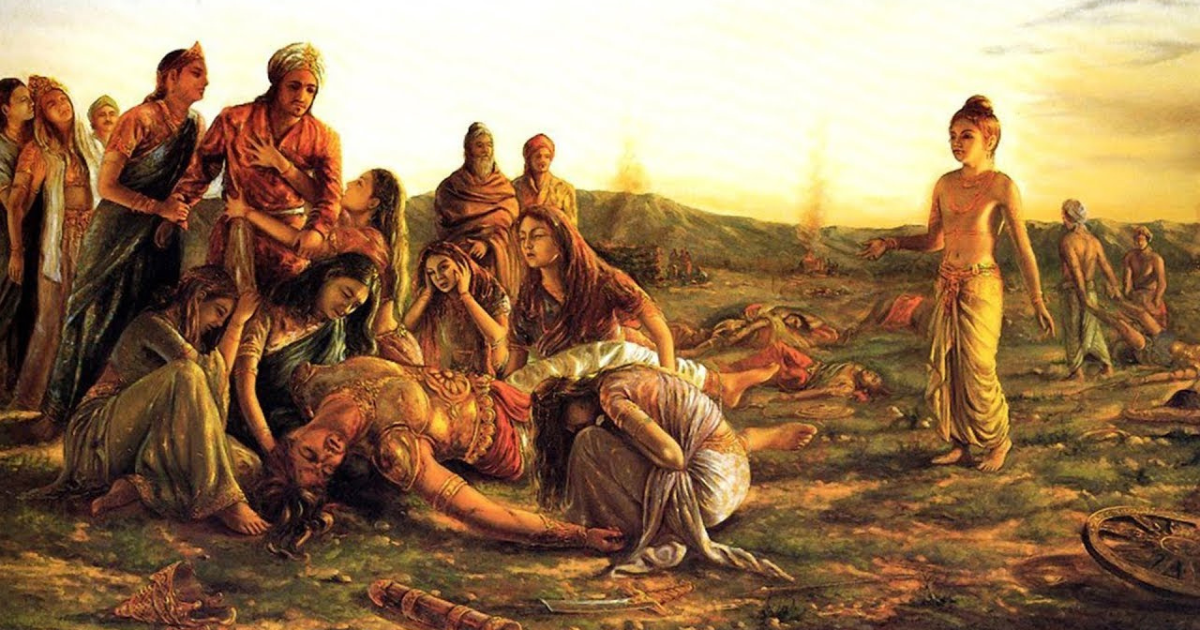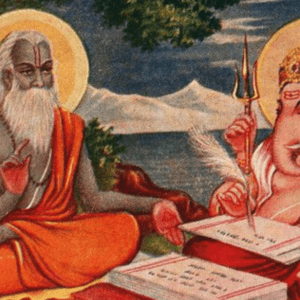Mahabharata is an epic Sanskrit tale written by revered Hindu Sage Vyasa. The Mahabharata is one of India’s greatest epics, telling the story of the Kurukshetra War between the Pandavas and the Kauravas. If you are here, you must be wondering when did Mahabharata happened. This post is all about it, here we will try to estimate when exactly did the Mahabharata war happened while covering everything around Mahabharata’s timeline. Join us as we uncover our ancient timeline’s rich history and stories.
Table of Contents
When Did Mahabharata Happened?
Determining the exact date of the Mahabharata is challenging due to varying interpretations and evidence. Some research suggests the Mahabharata happened around 1000 BCE or 900 BCE, with one theory pinpointing the dates between October 23 and November 9, 900 BCE, based on eclipse data. Popular tradition, however, places the war around 3102 BCE, marking the transition from the Dwapara Yuga to the Kali Yuga. These differing views highlight the complexity of pinpointing the precise timeline of this ancient epic.
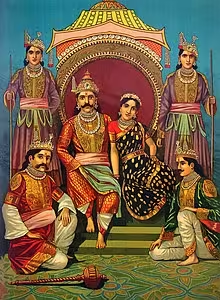
Ancient Texts and References
There are numerous references to determine when Mahabharata happened. Let’s start by referring to ancient Hindu texts and scriptures.
Vedic Literature and the Mahabharata
Vedic literature includes the oldest texts in India, called the Vedas. There are four Vedas: Rigveda, Samaveda, Yajurveda, and Atharvaveda. These texts contain hymns, prayers, and rituals. They were written in Sanskrit and are very important in Hinduism. The Mahabharata is another ancient text. It is an epic story about a great war between two groups of cousins, the Pandavas and the Kauravas. The Mahabharata also includes the Bhagavad Gita, a sacred dialogue between Prince Arjuna and the god Krishna.
Puranas and Historical Accounts
The Puranas are a group of ancient texts that tell stories about gods, goddesses, and ancient kings. There are 18 main Puranas, and they include tales of creation, destruction, and the genealogy of gods and heroes. These texts also provide historical accounts and cultural information about ancient India. They were written to make complex religious ideas easier to understand for everyone.
Archaeological Evidence And Findings
Archaeologists have found many interesting things in places mentioned in the Mahabharata. These discoveries help us understand more about the time when the epic events might have happened.
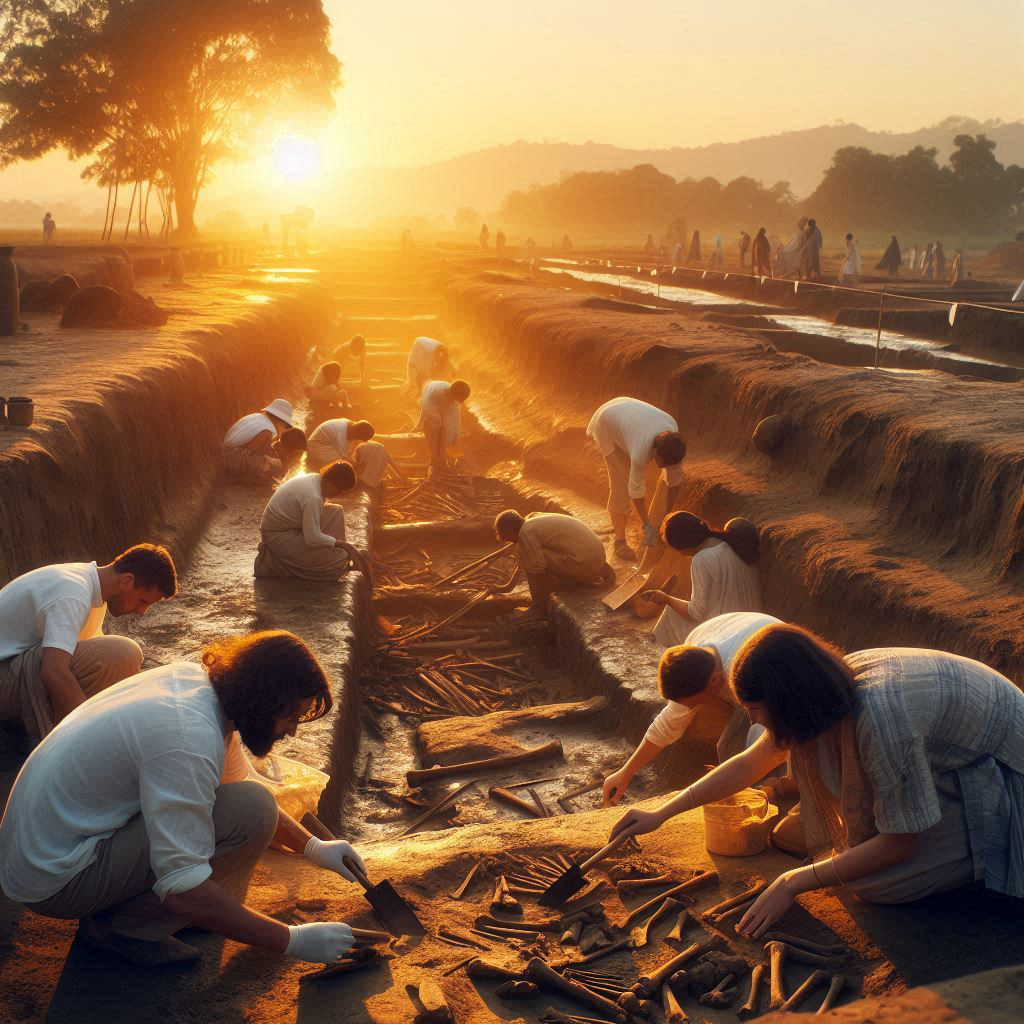
Excavations At Kurukshetra
Kurukshetra is a very important place in the Mahabharata. It is where the big battle between the Pandavas and the Kauravas happened. Archaeologists have dug up many things here. They found old weapons like iron arrowheads and spearheads. These items help us understand that a big war might have happened here a long time ago.
Artifacts And Relics
In different places mentioned in the Mahabharata, like Hastinapur and Indraprastha, archaeologists have found many old items. They found pottery, plates, bowls, and cooking pots. These items are very old and match the time of the Mahabharata. They also found pieces of jewelry made of gold, silver, and copper. These discoveries help us learn more about the people who lived during the time of the Mahabharata.
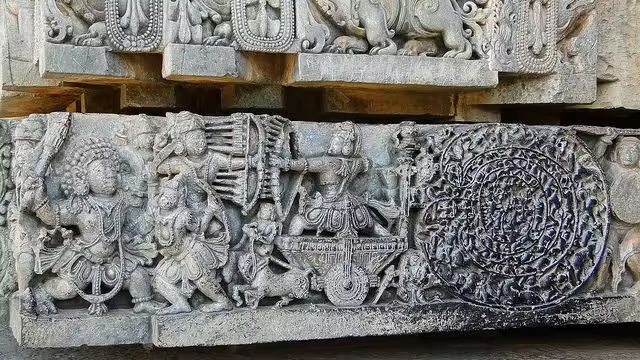
Debates and Theories Among Scholars
Many scholars have debated its historical context for years, offering different perspectives based on traditional beliefs and modern research.
Traditional vs. Modern Interpretations
Traditional interpretations of the Mahabharata often view it as a historical and religious text, emphasizing its spiritual and moral lessons. These interpretations focus on the epic’s portrayal of dharma (duty) and karma (action), seeing it as a guide for righteous living. Traditional scholars also emphasize the divine aspects of the characters, such as the Pandavas being incarnations of gods and the Kauravas as demons.
Modern interpretations, however, take a broader approach. Scholars analyze the Mahabharata for its sociopolitical implications, psychological insights, and reflections on human nature. They explore themes like power dynamics, gender roles, and ethical dilemmas. Modern scholars also use critical methods to study the text’s composition, historical context, and its evolution over time.
Key Scholarly Opinions and Arguments
Scholars have diverse opinions on the Mahabharata’s origins and significance. Some argue that the epic is a historical record of ancient Indian society, while others see it as a mythological narrative with symbolic meanings.
- Research-Based Theories: Some research suggests the Mahabharata took place around 1000 BCE, while others believe it was fought in 900 BCE. One theory, based on eclipse data and the work of archaeologists and researchers, suggests the war occurred between October 23 and November 9, 900 BCE.
- Popular Tradition: According to popular tradition, the Mahabharata happened around 3102 BCE, marking the transition from the Dwapara Yuga to the Kali Yuga. In Hindu belief, the Dwapara Yuga was an age of energy, while the Kali Yuga is considered a dark age.
Also Read: Discover Who Watched Mahabharat 16 Times?
FAQs
In which year Mahabharat happened?
The Mahabharata is believed to have occurred around 1000 BCE to 900 BCE, with some theories suggesting specific dates between October 23 and November 9, 900 BCE, based on eclipse data.
Is the Mahabharata a true story?
The Mahabharata is considered a mix of history and mythology. While some believe it is a true historical account, others see it as a symbolic narrative with moral and spiritual lessons.
What is the proof of the Mahabharata?
Evidence supporting the Mahabharata includes references in ancient texts like the Vedas and Puranas, genealogical records, and archaeological findings such as artifacts and submerged structures in Dwaraka.
Which BC did Mahabharata happen?
The Mahabharata events are often dated to around 1000 BCE to 900 BCE. Some traditional beliefs place the war around 3102 BCE, marking the transition from the Dwapara Yuga to the Kali Yuga.
Conclusion
Determining the exact timeline of the Mahabharata is a complex task due to varying interpretations and evidence. If you are wondering when did Mahabharata happened, research suggests it was around 1000 BCE to 900 BCE, popular tradition places it around 3102 BCE, marking the transition from the Dwapara Yuga to the Kali Yuga. The Mahabharata remains a blend of history and mythology, with archaeological findings and ancient texts providing glimpses into its historical context. This epic continues to be a subject of fascination and study, offering timeless lessons and insights into human nature and society.
